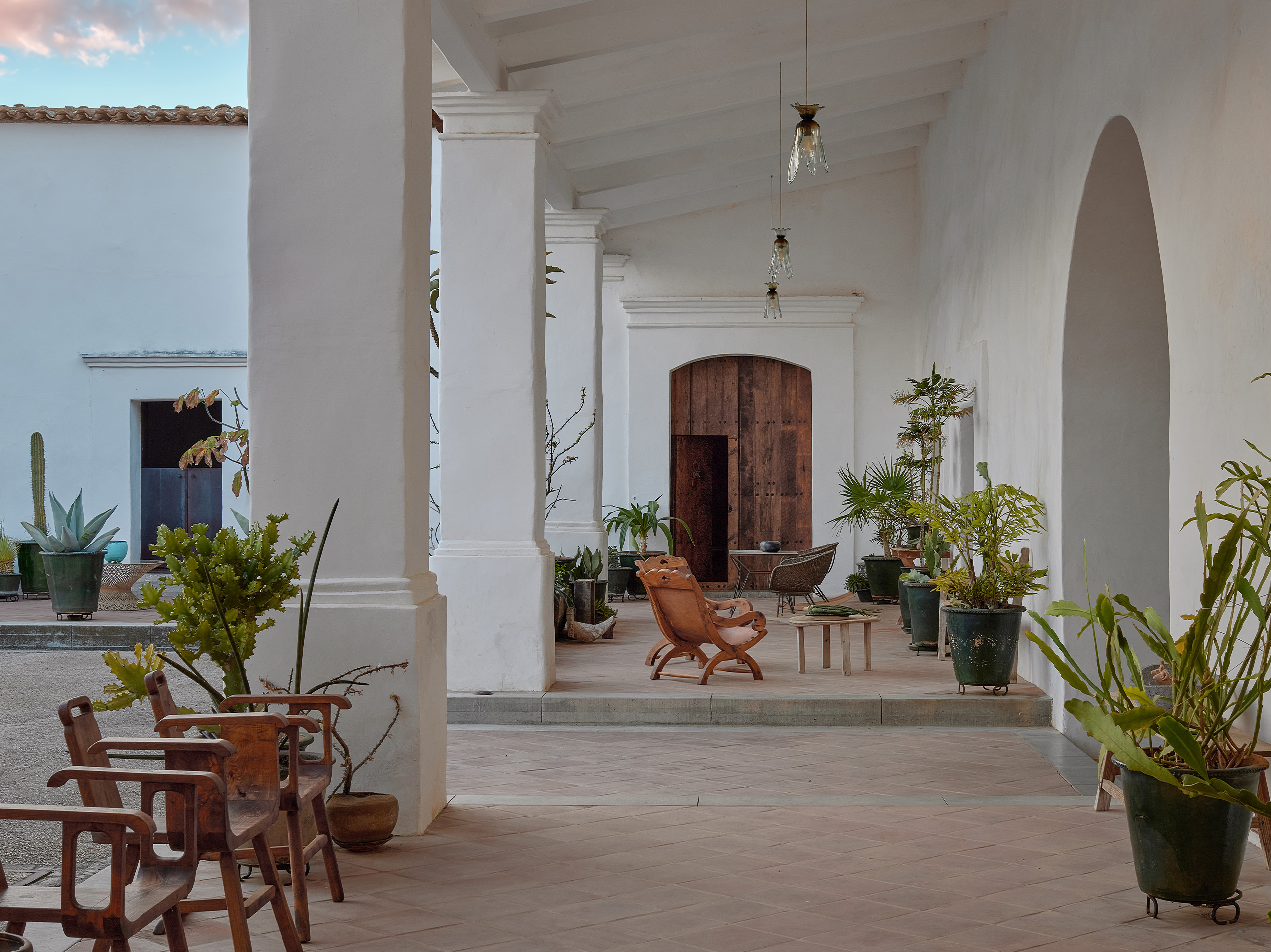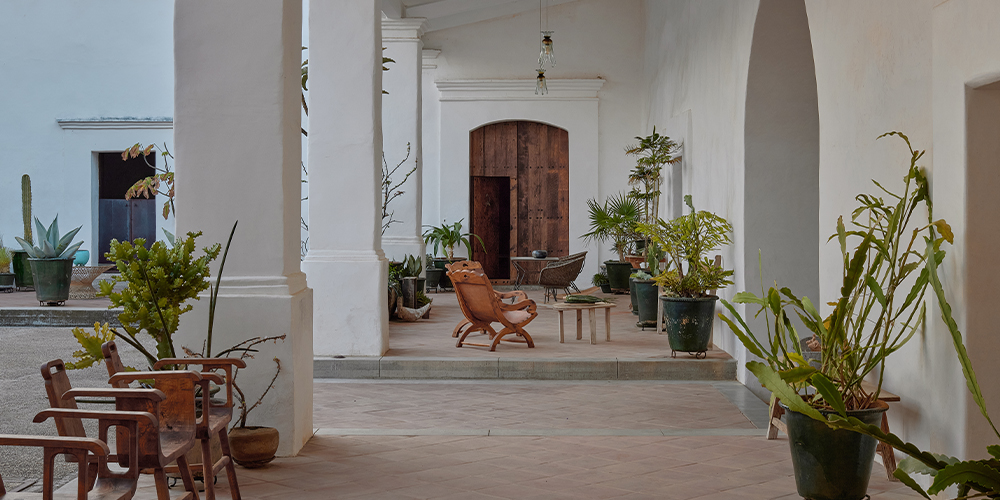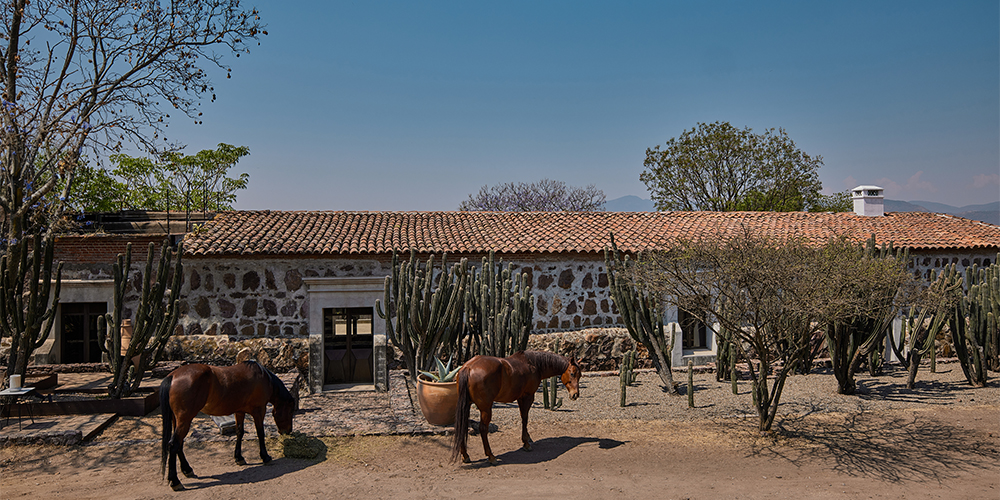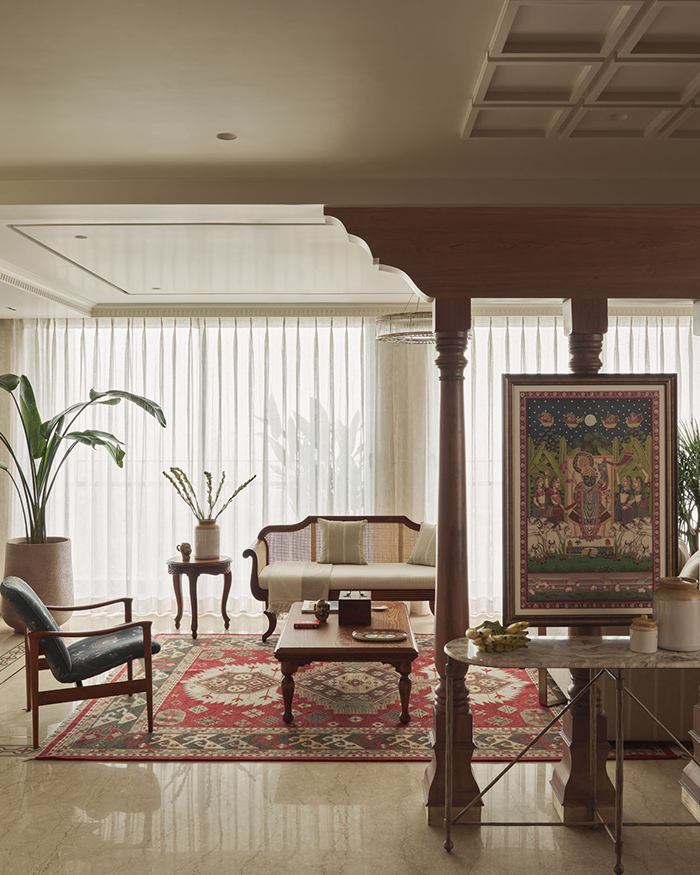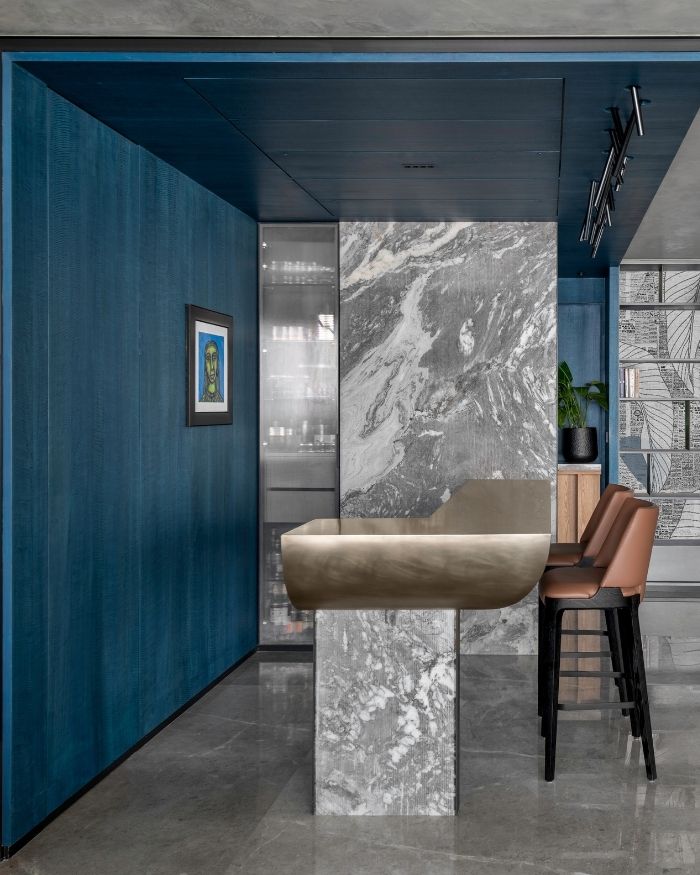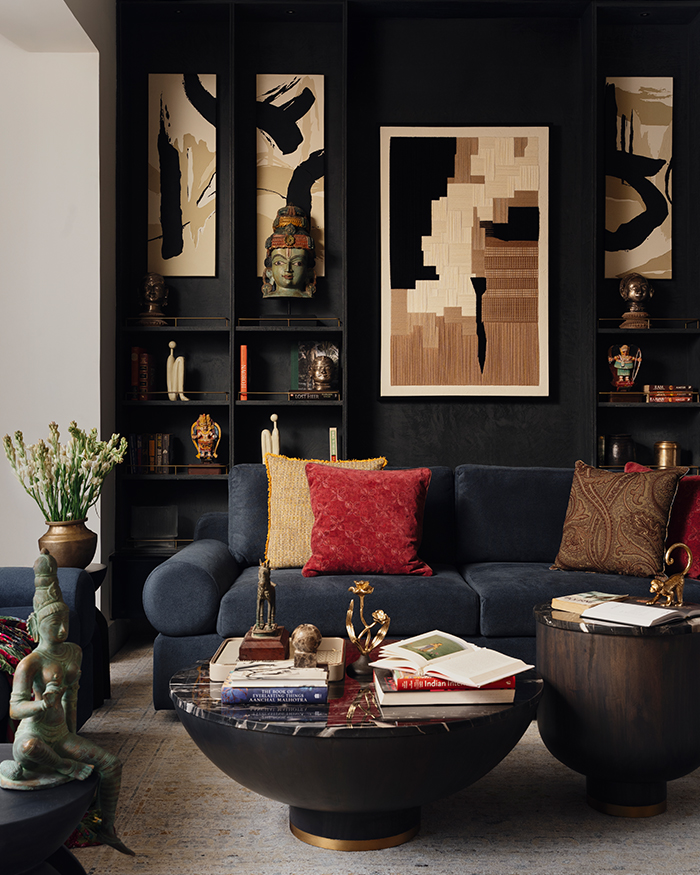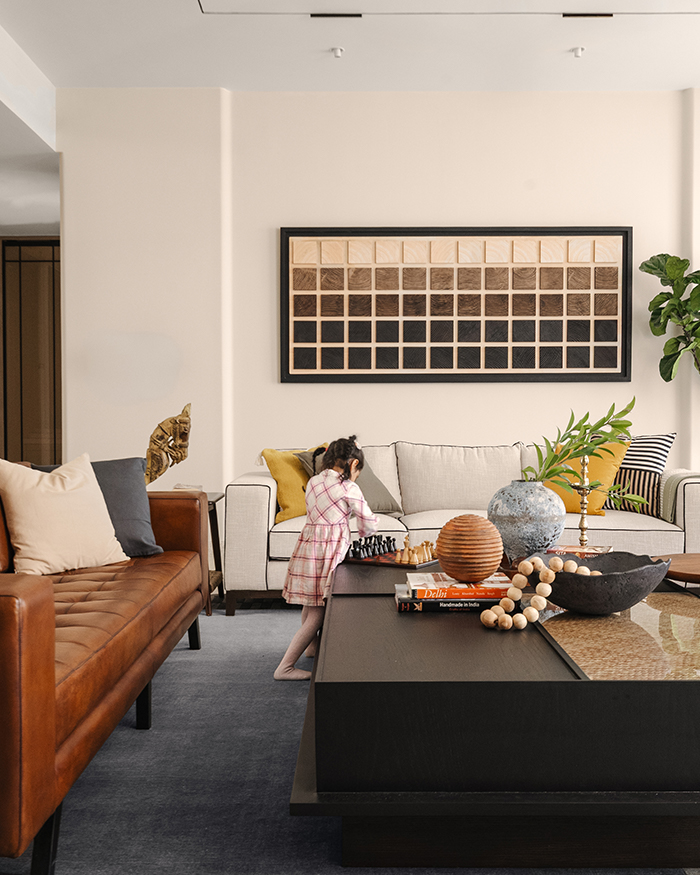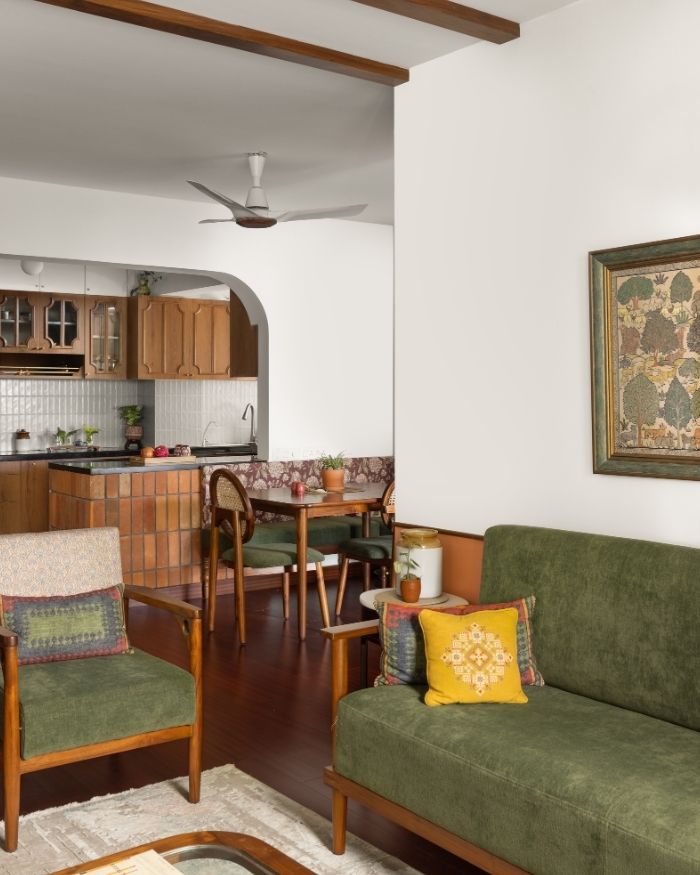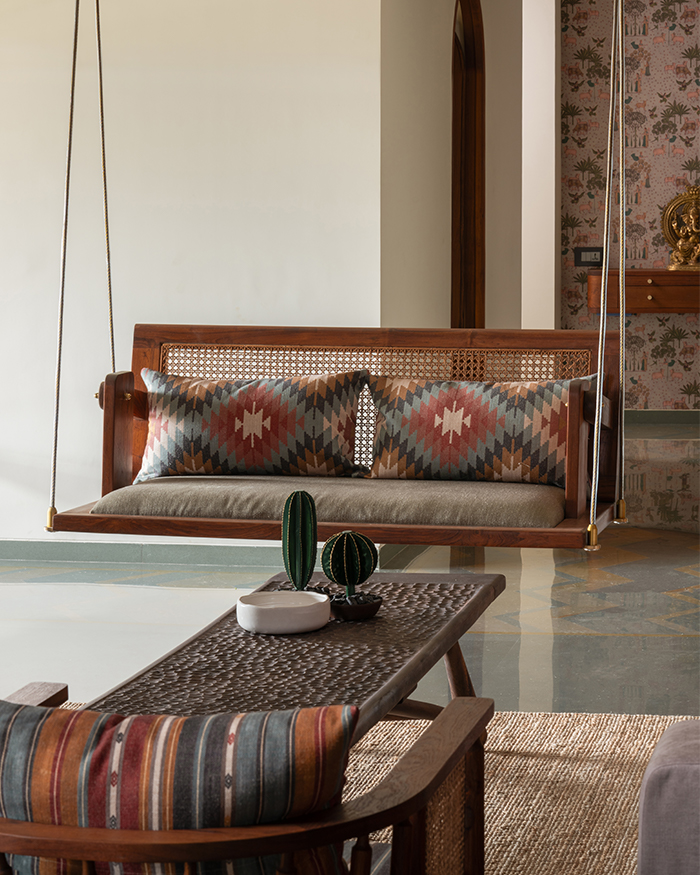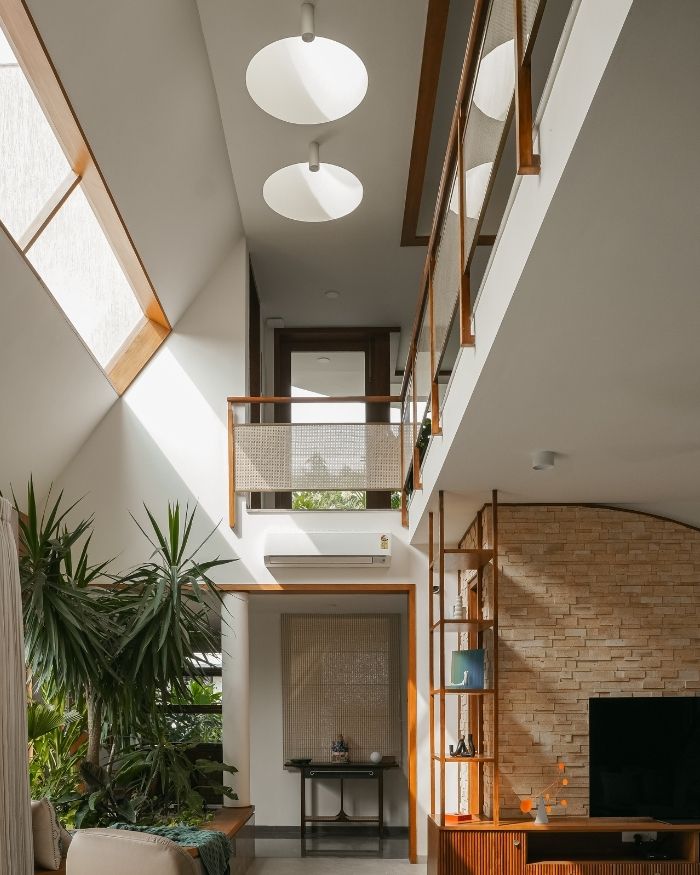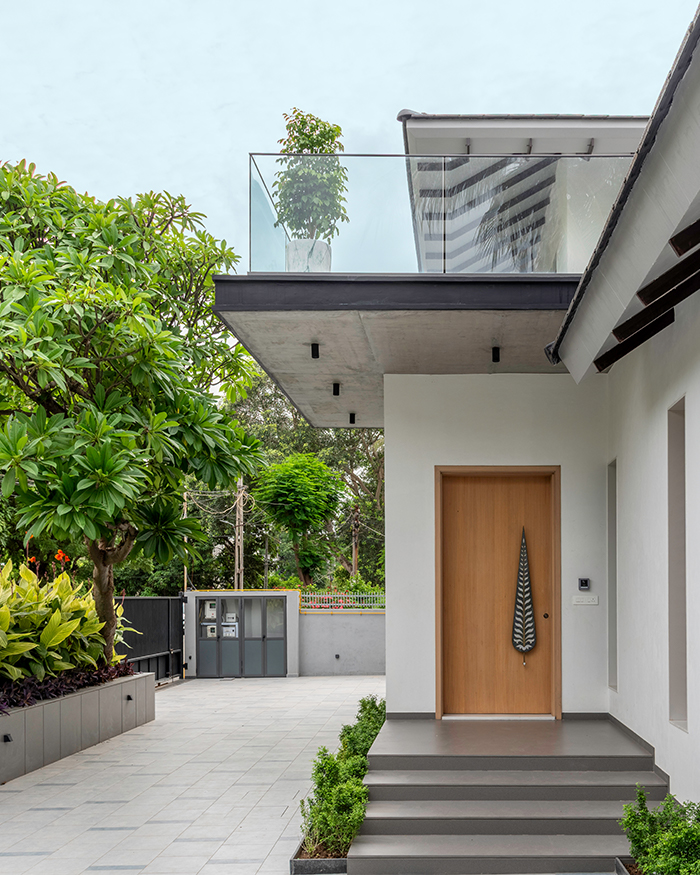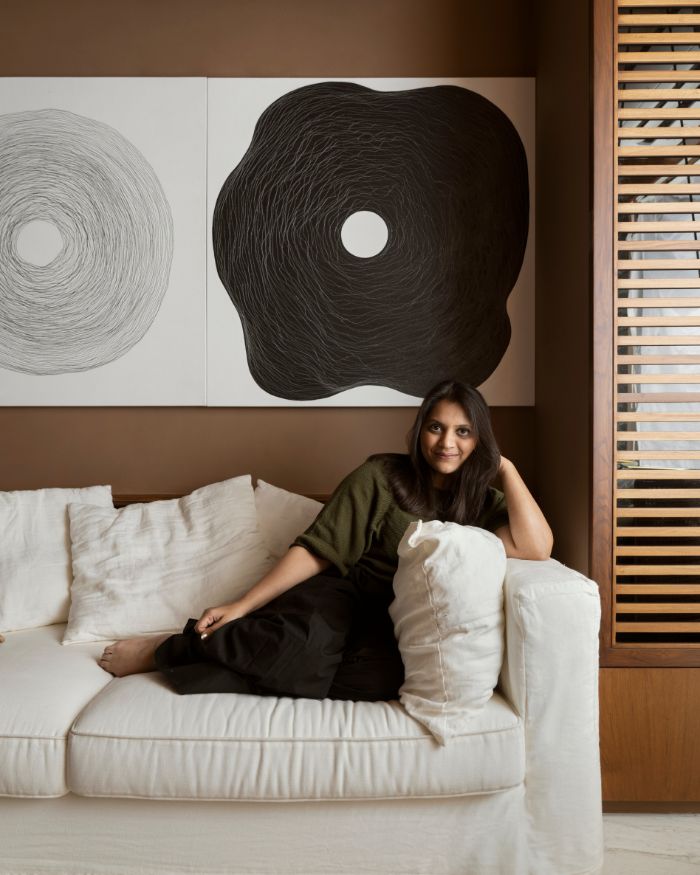If you are partial to cocktails, you must be no stranger to the fact that tequila traces its origins to Mexican agave. What you may not know is that at the heart Tlacolula Valley, an important agave-growing region near Oaxaca, is the town of San Jerónimo. Surrounded by a landscape of ancient temples, ruins and legends, in an 18th-century Hacienda live a designer and a writer.
When Raul Cabra, a designer of objects, graphics and interiors and Michael Sledge, who is a writer came across this house in 2007, it looked nothing like it does today. After an eight-year restoration period, their home, which they named the Ex-Hacienda Guadalupe, is now open for creative workshops and events.
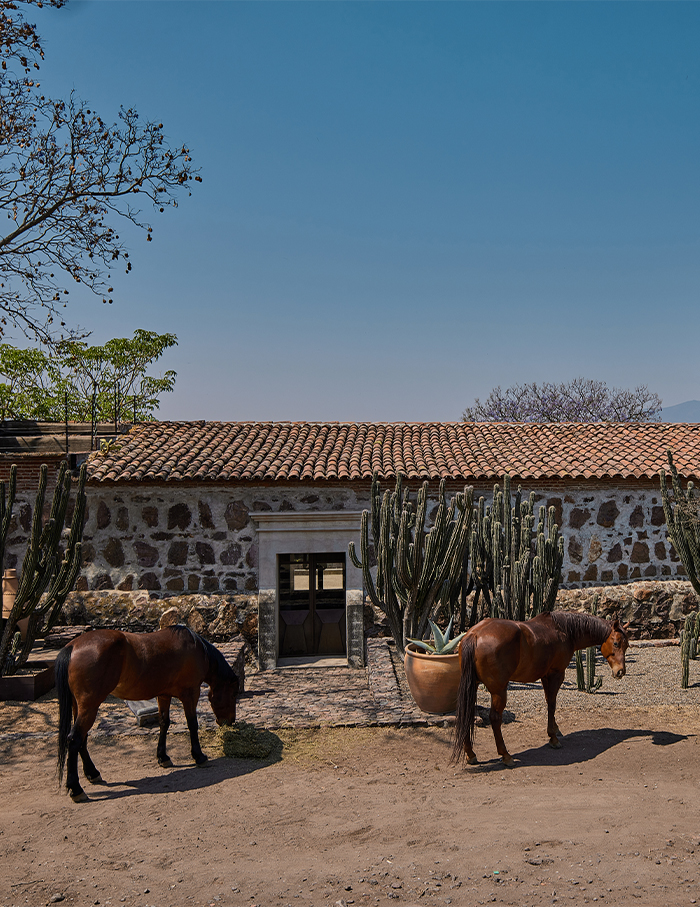
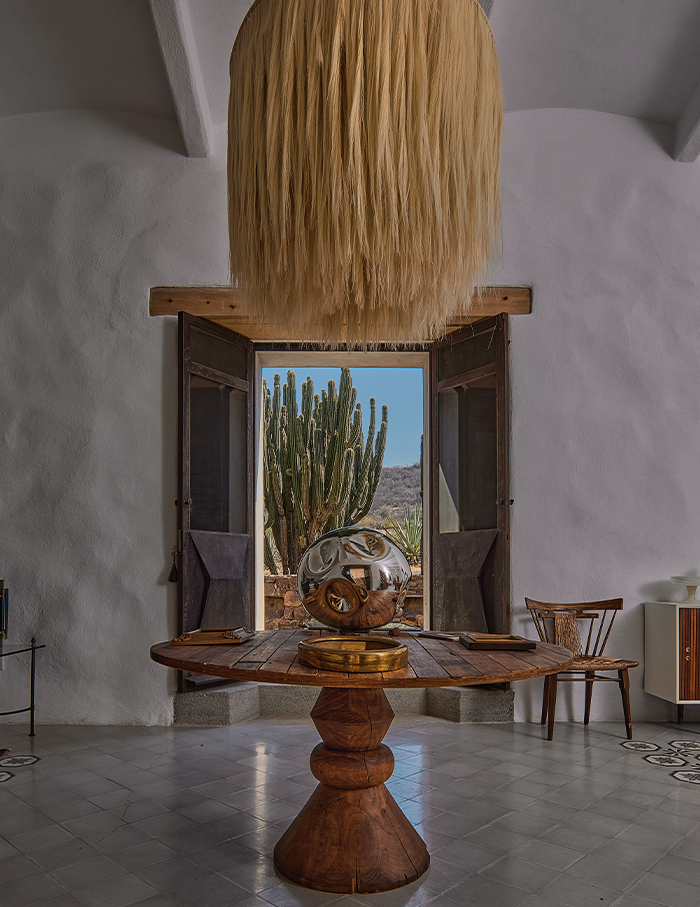
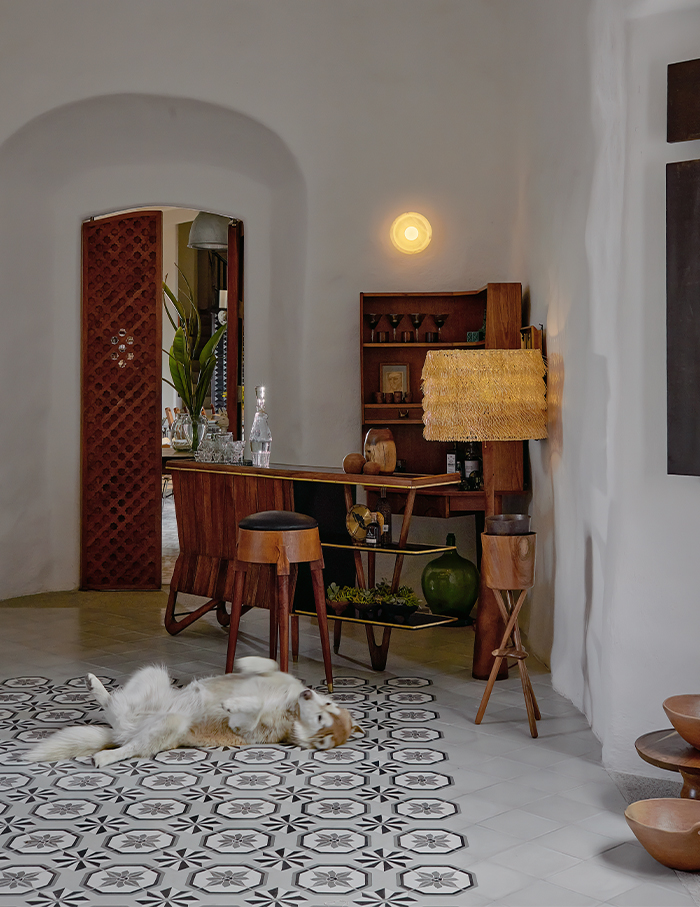
What’s inside the Hacienda?
In the centre of the spacious 6,700 sq ft form, the gurgling sound of water from the inverted fountain in the patio greets you upon entry. The living spaces overlook this patio while on the opposite side are the public areas. Akin to an enfilade, the rooms are connected in a sequence. A rounded door connects the living room and the kitchen, which once opened reveals the depth of space. The original stables have been converted into a family room that leads to the back gardens along with stables for the livestock and horses, honouring the original function of the space.
“It was about eight years of living in the most rustic environments for me to understand what needed to be done before I did anything or purchased anything other than very simple bare furniture,” recall Raul and Michael, “This house is an ode to Oaxaca.” His husband, the writer has taken the charming yet quiet guard house outside the walls of the Hacienda. On the other hand, Raul himself has converted the chapel into office spaces, design studios and showrooms.
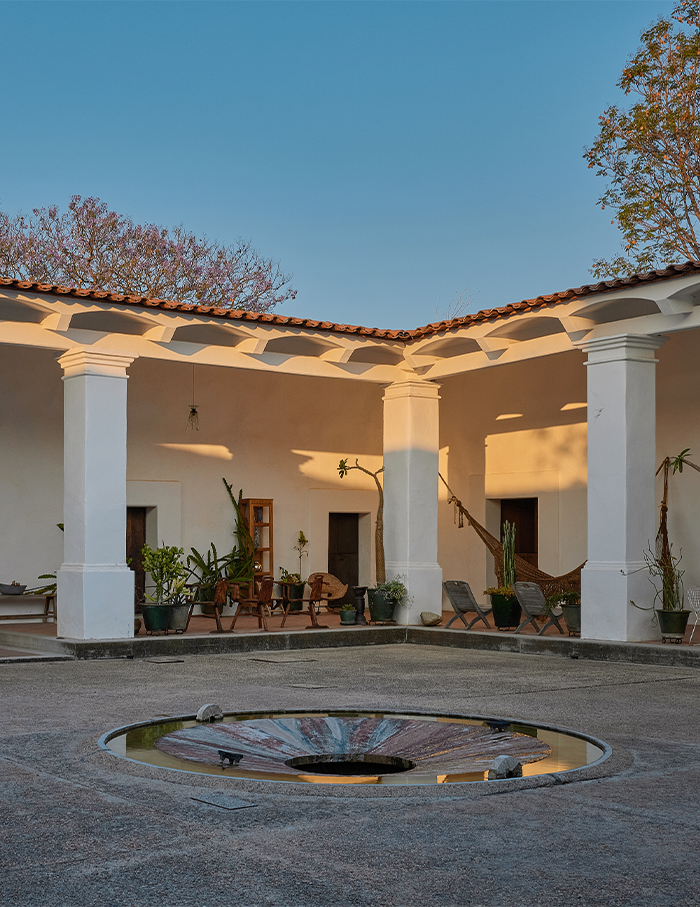
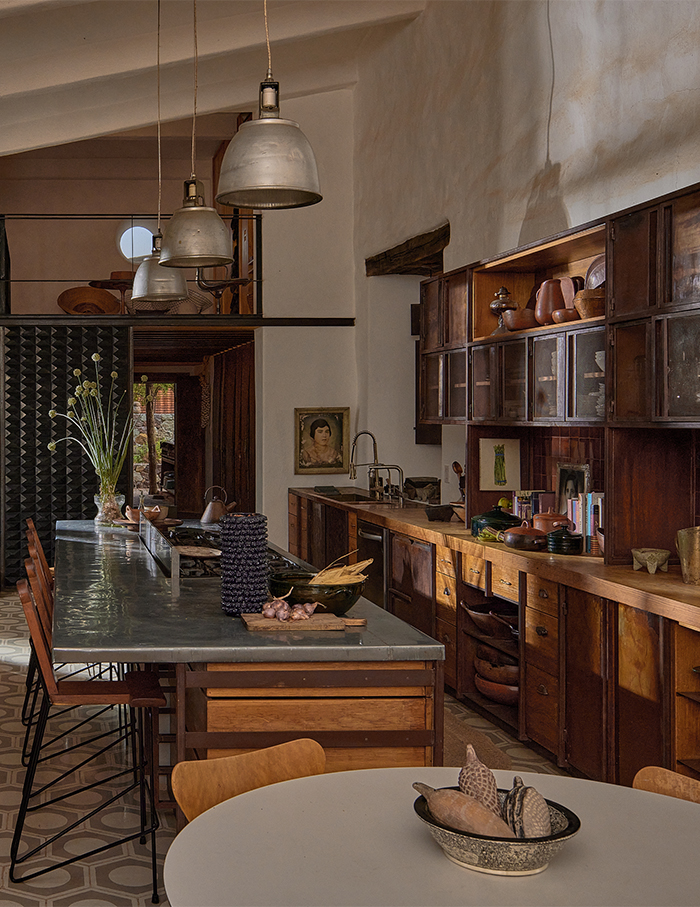
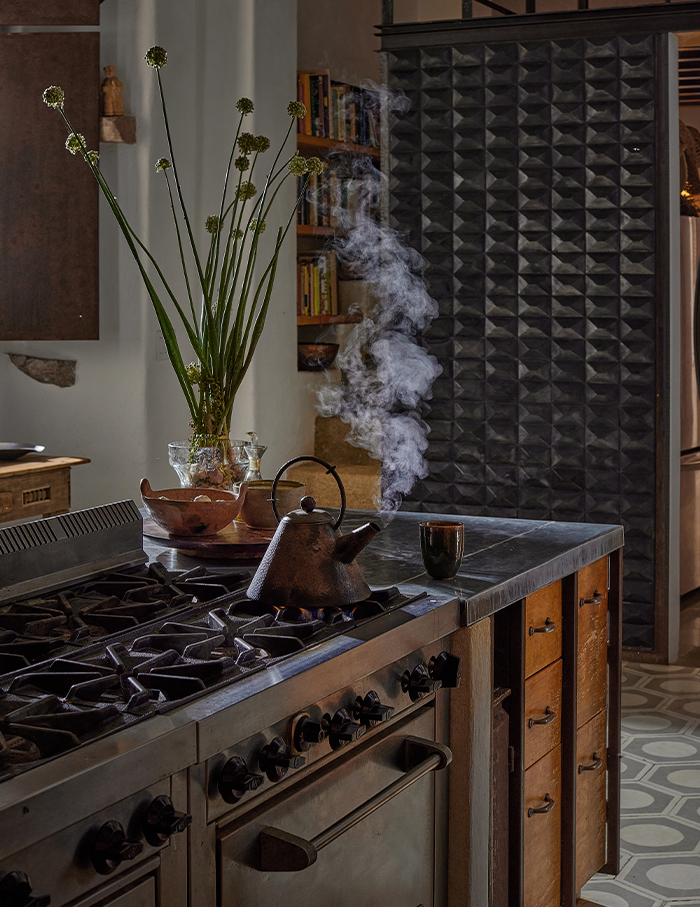
A slow restoration by hand
Interestingly, the entire house has been restored, without the use of machinery. “The choice to restore by hand is rooted in our desire to honour the original craftsmanship of the space, using the same techniques that were employed during its creation,” elaborate Raul and Michael. Considering the nature of the 18th-century building constructed in stone and mortar, there were risks and challenges that could arise with more aggressive methods.
“I’ve come to realize that a space cannot be forced into our vision; rather, it needs the time and freedom to reveal its true essence,” says the designer. Inhabiting a historic landmark, the designers felt a deep reverence for the Hacienda’s relationship to its context and the people. They restricted their palette to locally sourced materials and even repurposed railroad ties into a desk as a tribute to the old railroad that once ran in front of the building, transporting products from the Hacienda in its former life as a production farm. The doors and windows from the 17th century from other states of Mexico were reclaimed and brought to the home. Wood and metal, wherever used were allowed to remain in their natural state. The kitchen floors are constructed in cement with a technique popular in the 18th century. The space was a labour of love created alongside architect Claudina Lopez Morales, restorer Enrique Lastra and interior architects Misael Lavariega and Ileana Luciano.
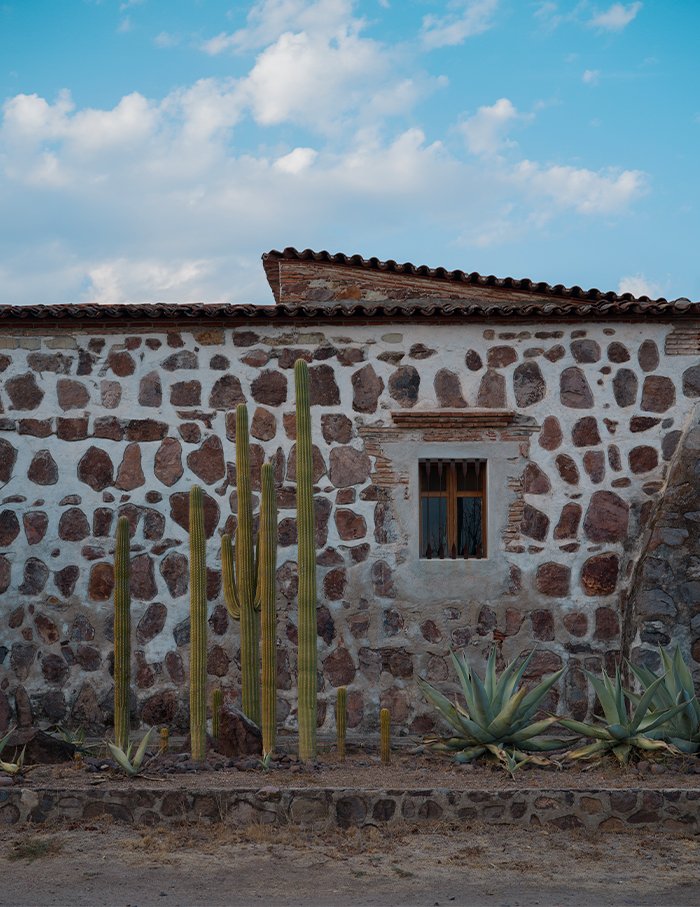

Inviting the community inside
A Hacienda, by typology, is a communal space. And even in its current avatar as a home for Raul and Michael, it still serves as one. While they slowly restored the space, they started holding workshops for Raul’s Oax-i-fornia project simultaneously. “Oax-i-fornia is a project that brings together design and art students with artisans in Oaxaca. The idea was to create a space where the artisans and students could actually meet, collaborate and grow together,” the couple avers.
Speaking about the approach, they tell us, “We must thoughtfully consider the history as we construct, ensuring that our efforts create a new harmony that respects and embraces the legacy of what has come before.” So the next time you sip on your Tequila Sunrise, we suggest you pass on the story of Ex-Hacienda Guadalupe. A home out of a dreamscape, in arid terrain, with patches of cacti, rays of light and a palimpsest of stories.
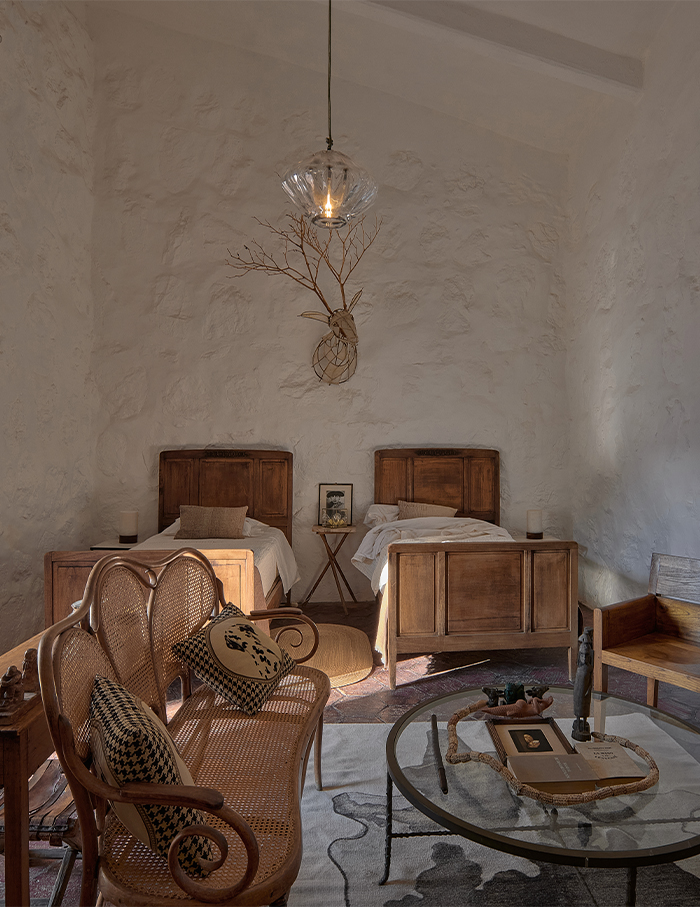
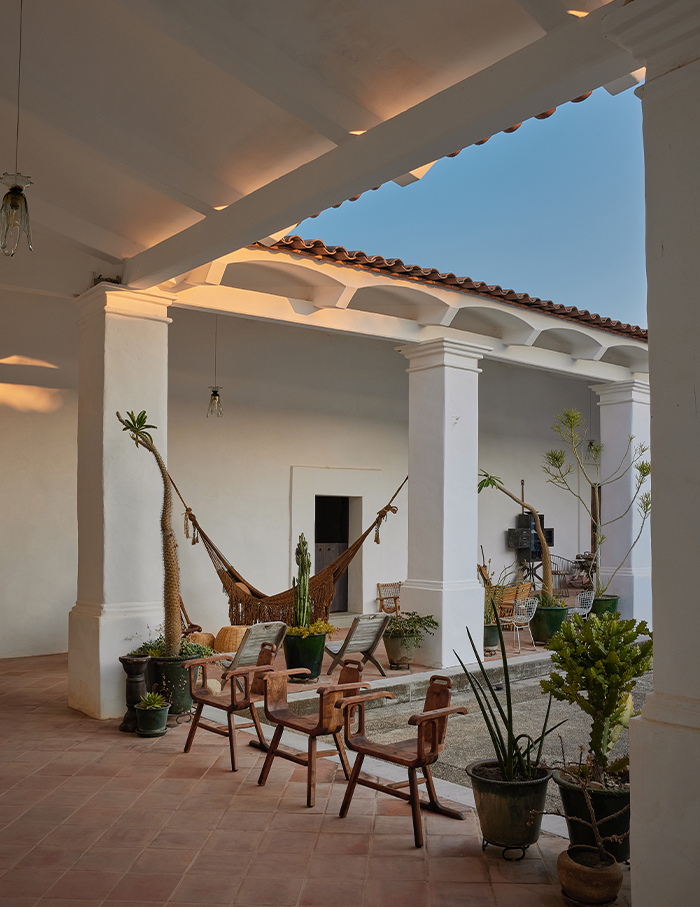
Scroll down for more…
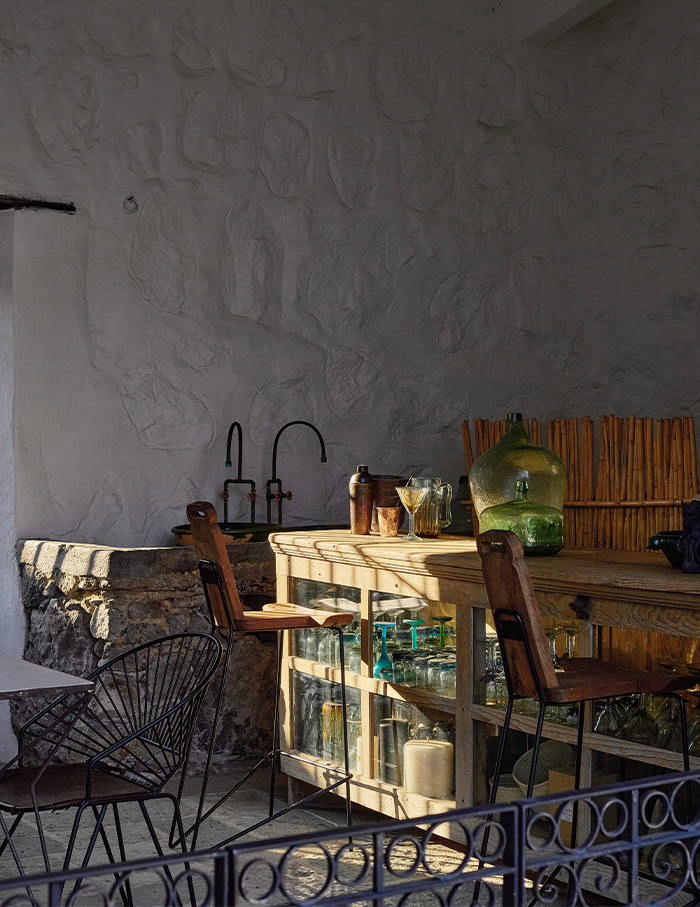
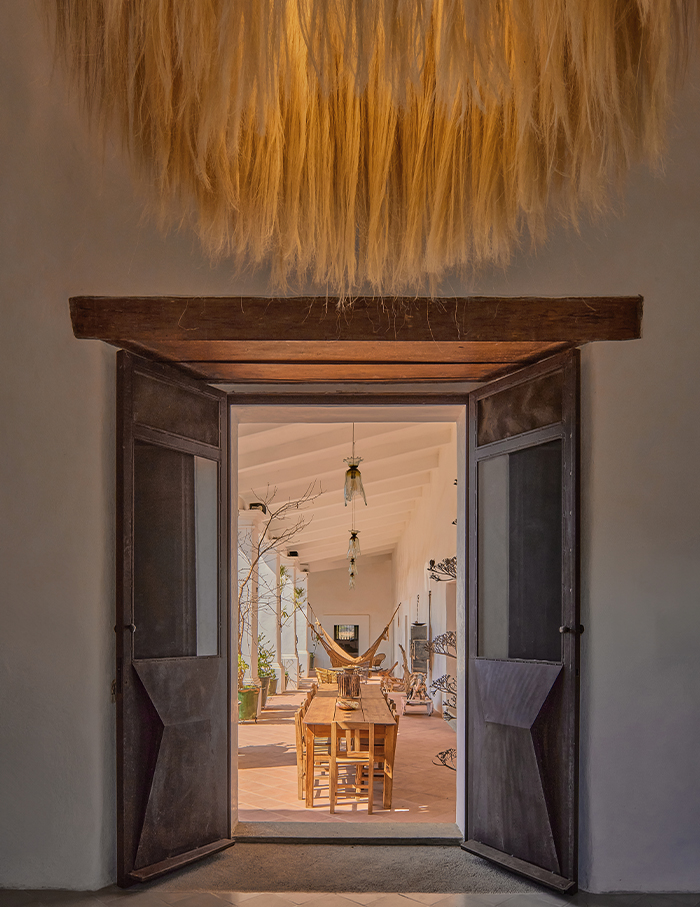
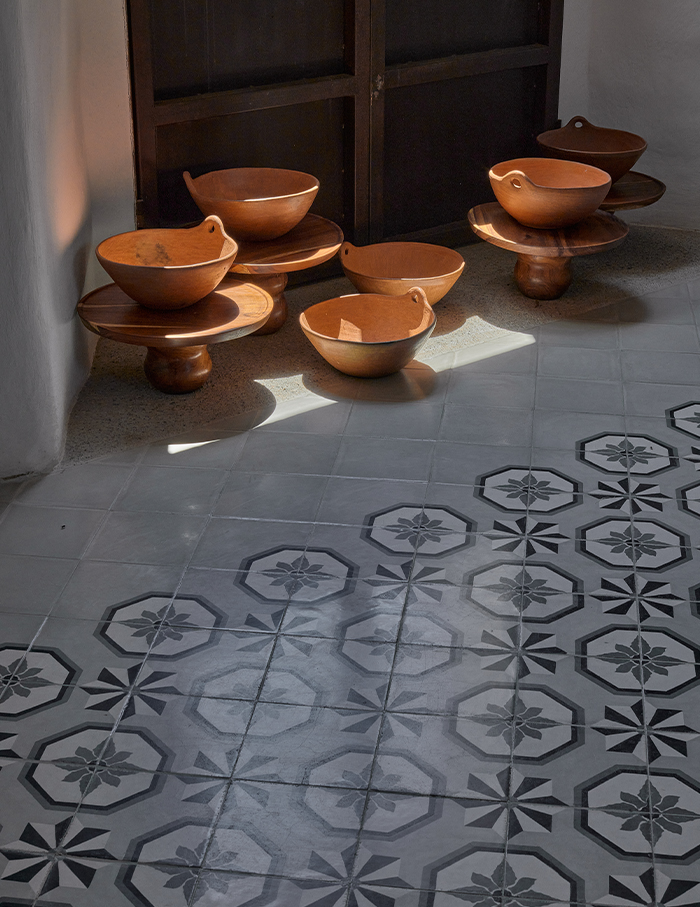
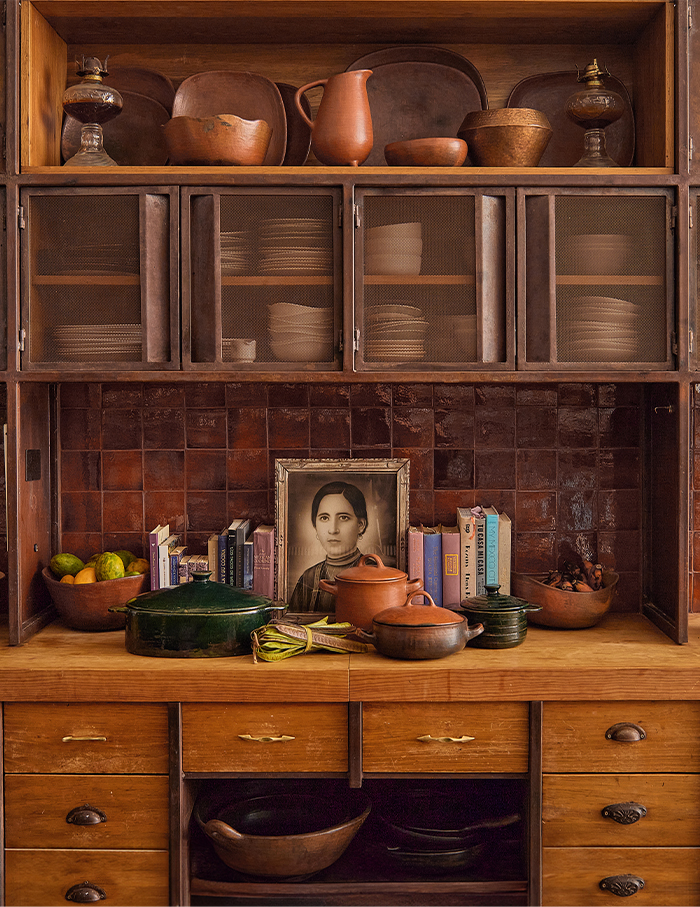
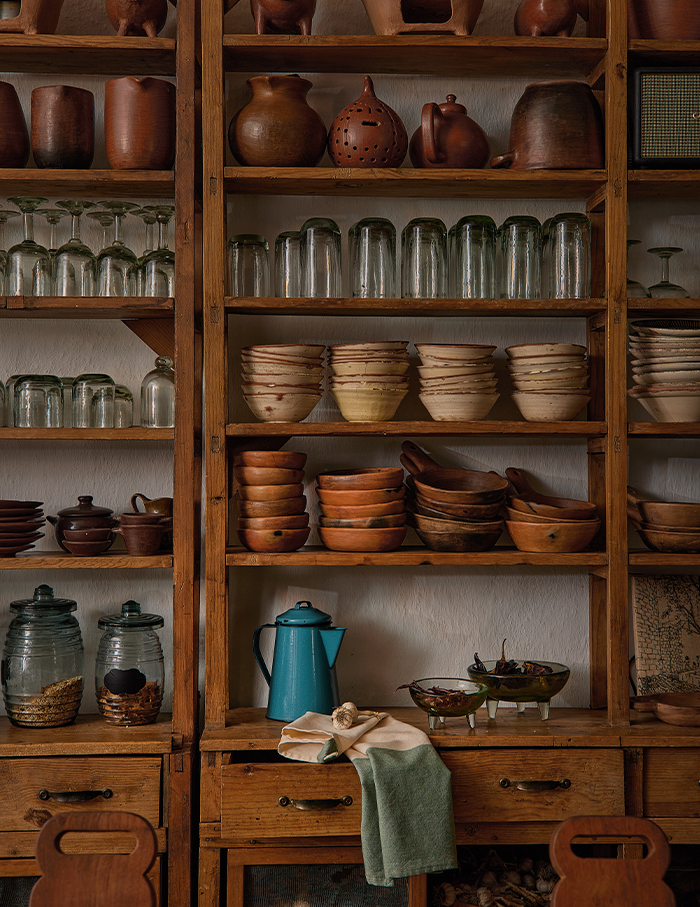
Now Read: What do women want? To shop with the female gaze at Amisha Kothari’s Mumbai store

